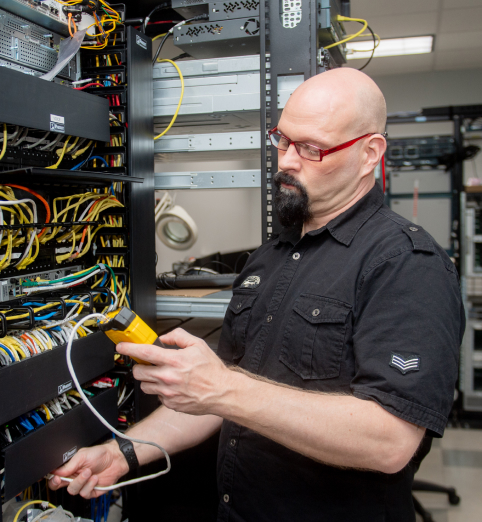If your business is in tech (and aren’t all businesses these days?), you know the importance of a smooth-running, secure network that imposes limited downtime for employees and customers. And if your network architecture is still built on older copper cabling, you’ve probably considered upgrading to a fiber optic network. Perhaps you’ve been hesitant to make the investment—especially if you’ve been able to get by with your current solution.
We get it, the switch to fiber can be a big upfront investment—but it’s one that will pay off for many years to come. Here are a few reasons to go ahead and take that leap.
1. You’ll experience immediate increase in network bandwidth.
One of the most obvious and immediate benefits of switching to a fiber network is the increase in your network bandwidth—which will not only serve your existing operations but position you for future company growth. You won’t have to worry about a lagging network as you continue to expand your business, and more people and devices start accessing the network.
You also won’t have to worry about throttling bandwidth during peak traffic times (you know, when you need your network performance at its best). If your network is currently built on copper cables, they can get overloaded when demand and activity is too high. As a result, people relying on copper often put measures in place to reduce or limit access during these peak times to prevent outages. Fiber has no such restrictions and isn’t as prone to outages caused by overload.
2. Your fiber optic network grows as you grow.
We all had that favorite childhood t-shirt—the one we loved so much that we wore it even after it got a little snug or too short. Wouldn’t it be nice if our favorite things could grow with us? With a fiber network, that’s possible, at least when it comes to network capacity. A properly planned and built fiber network takes into consider not only your current needs, but your future needs as well. This means you can always add additional fiber cables when and if you need them to increase your net capacity as your company and operations scale.
3. Fiber is an important player in keeping you safe and secure.
No one wants to send out the dreaded email to customers to let them know their data was involved in a security breach. Due to the way they transmit data, fiber optic networks decrease (though they don’t eliminate) security risks inherent in copper networks. Because fiber transmits data through light, rather than electric currents, it’s much harder to hack into and its data transfers are more difficult to intercept.
That said, fiber optic cabling alone isn’t enough to keep your company and your customers’ data secure. A truly secure fiber network is one set up with intentional security measures in mind—like proper data encryption, firewalls, security monitoring systems, and appropriate access restrictions. Our engineers can make sure your network has all of that.
4. You can avoid the hassle of excessive maintenance.
We’re big fans of carefully managing our IT assets through regular monitoring and maintenance, but nobody wants the headache of constantly fixing something that’s prone to malfunctioning and needs regular replacement. Unlike copper network cabling, fiber doesn’t corrode or break down over time. Fiber’s durability over time also means reduced long-term maintenance costs. Add those savings to your bottom line!
So if you’ve been holding off because your existing copper cabling is “making do” for now, keep in mind you’ll be spending money soon to replace those cables as they degrade. Might as well put that money toward a future-facing investment.
5. You’ll reduce waste and environmental impact.
The durability and longevity of fiber optic cabling not only means less maintenance and lower replacement costs for your business, but it also means less waste over time. The fewer parts that need replacing, the less waste your business generates. Fiber optic networks also use less energy than copper cable networks and generate less heat—which, in turn, means you’ll use less energy to regulate temperature. Oh, and that also means lower monthly energy costs for your business, as well! Win-win.
Have questions and want to explore what upgrading your network with optical fiber would look like for your business? Reach out to one of our engineers to set up a call. We’re experts in optical networking design, hardware, and services and will guide you every step along the way.



